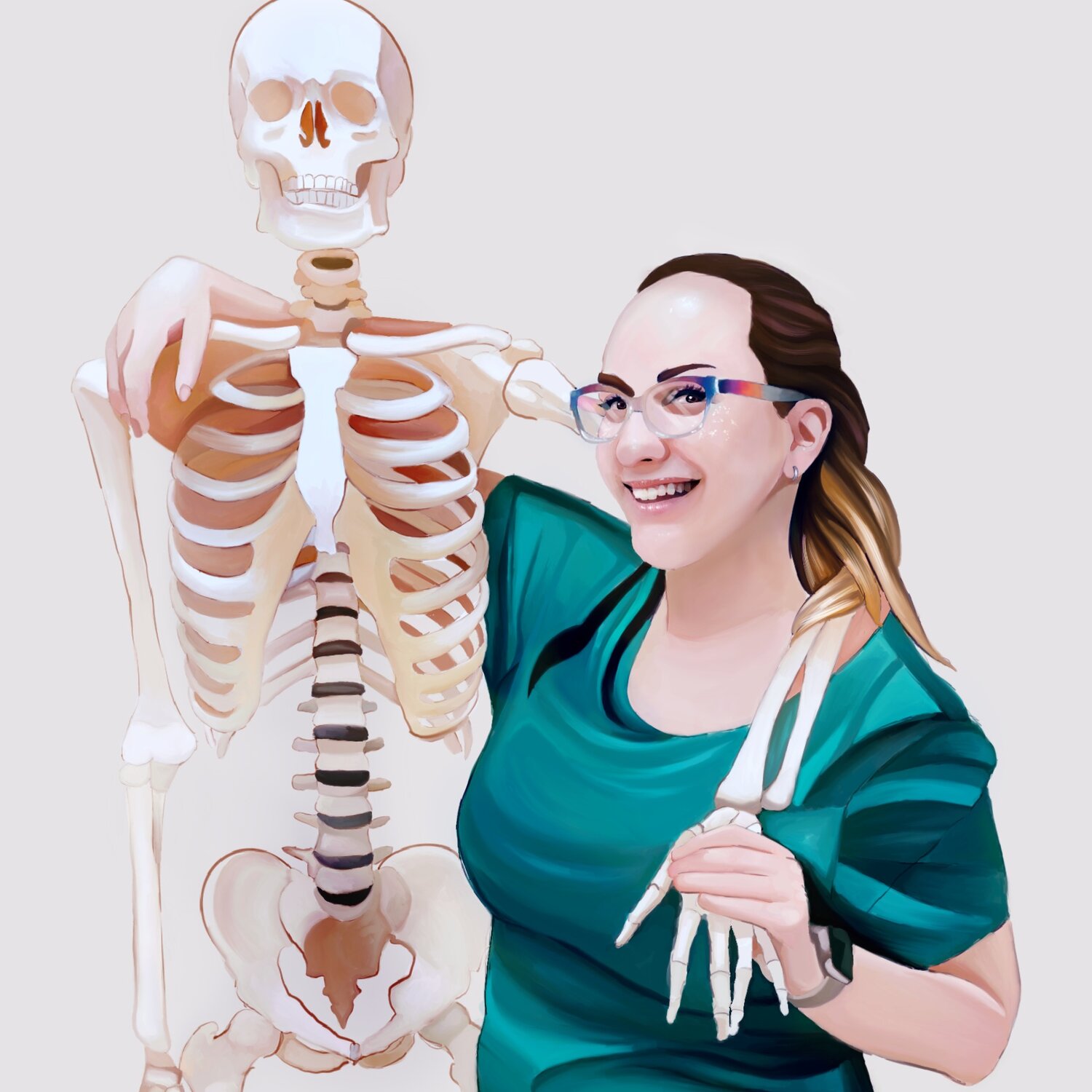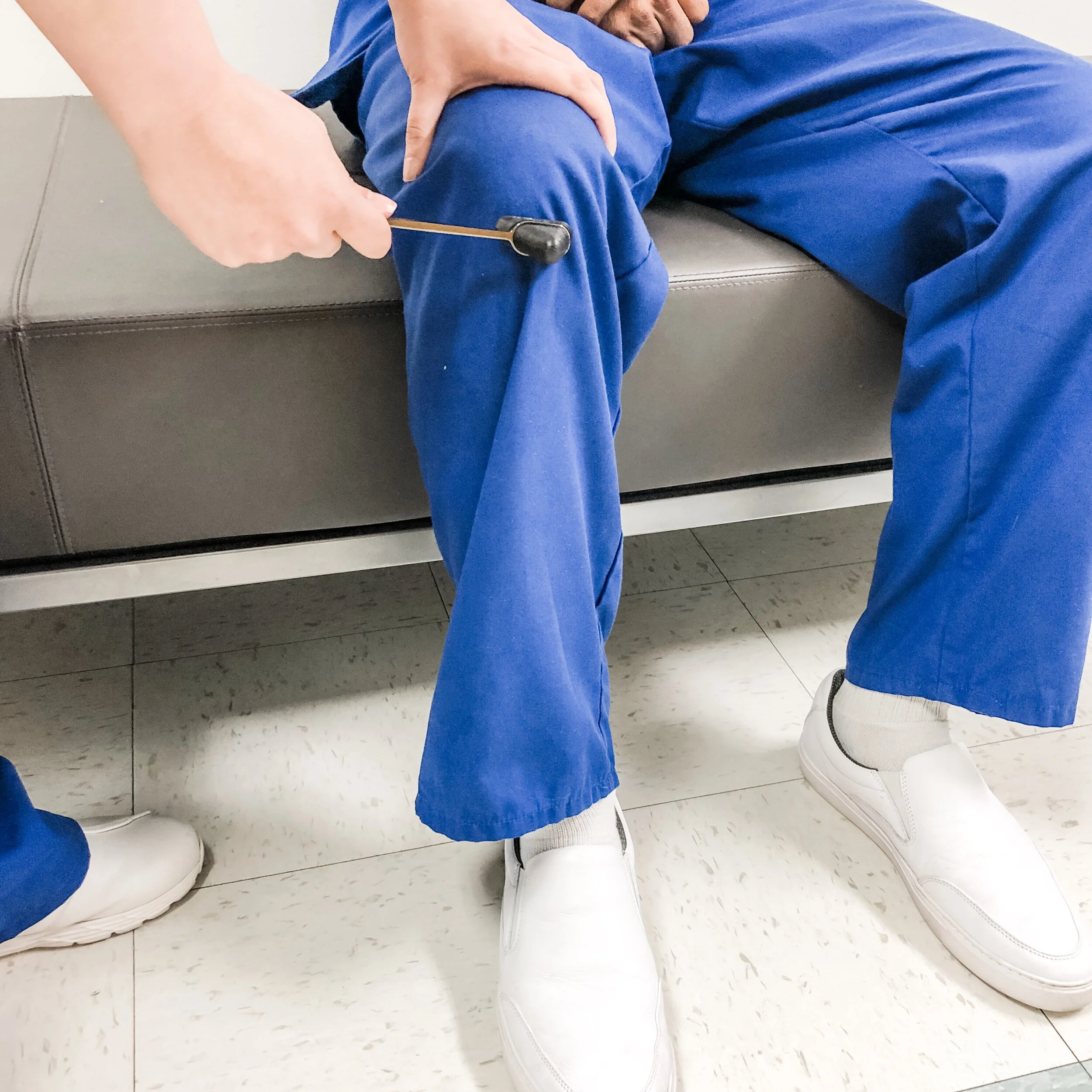Are You A Library Book? Because I’m Gonna Check You Out.
Oh, what, you didn’t like that title!? Listen, I’ve got to keep things light here. Go to one of those Super Serious Nursing Sites if you don’t want my pitiful attempts at humor.
Okay, so let’s talk about the meat and potatoes of nursing (and, I’d argue, medicine in general): the head-to-toe assessment. Even just typing those words gave me a violent flashback to my Health Assessment courses, where I had to memorize the twelve different names we call every single test, the normal/abnormal findings of everything, and what the hell we’re even looking back…and then put it all together in practice on one of your classmates in front of a professor. No pressure.
But I guess what’s funny is how now that’s the least of my concerns. I don’t mean that in a “it gets so much worse, kid” kind of way, but just like…an assessment is just one of the many things I carry around in my Nursing Tool Box with me every day, and it isn’t something I fear at all now (usually). That’s kind of the POINT of nursing school, but it’s still a nice surprise.
So how did I ace my head-to-toe check-off? And how did I learn to make it no big deal in my day-to-day life?
Well, as with everything, the answer is practice. I’m sorry. I wish I could tell you there is some secret to getting it all down pat, but really it’s just doing it over and over and over until you’re charting findings in your dreams.
That said, I certainly did benefit from a few tips and tricks. Some nurses like to keep their assessments grouped by “thing,” like doing all the neuro assessments at once, checking all the pulses at once, checking motor response in all extremities at once, etc. And I think that’s a totally fine way of doing things, if it works for you. It doesn’t work for me, but I’ll tell you what does: regional assessment.
I start from the doorway, make it to the hands, work my way to the head, and then move towards the toes. So let’s see how that plays out, shall we?
“Hi, I’m Meris, I’ll be your student nurse today. Could you tell me your name and date of birth? Do you have any allergies? Are you in any pain right now?”
Boom. I’ve done my general survey. I can now see visual deformities, hear the clarity and quality of my patient’s voice and speech, and can tell if they’re alert and how oriented they are. I can see the rate, rhythm, and depth of their respirations and ventilatory effort. I can probably tell their GCS score at this point, and if I see anything that’s unusual (slurred speech, difficult to rouse, confusing answers, etc.) I can investigate further at this time.
Now, time to actually touch my patient. I like to start by having them do the grip test. Then push/pulls with the hands. Next I do capillary refill, feel radial pulses, and assess the status of any peripheral IVs at this time. In assessing pulses, I’m also checking skin temperature. Upper extremities sorted.
Then I move to the head. Pupil assessment is at this time, followed by looking in the mouth and asking them to smile and frown for me. Head sorted.
Now I break out my stethoscope. I start with the heart and listen in all five spots. Since I have a stethoscope with a tunable diaphragm, all I have to do is adjust the pressure I use and I’m able to hear the high and low pitched sounds. Next I listen to the anterior lung sounds, and then I immediately move down to listen to the abdomen.
Remember: we always touch before we listen, EXCEPT with the abdomen. If you’re new to this concept, let me explain! Bowel sounds can tell us a lot about what’s happening in our patient’s guts. I want to listen to those bowel sounds as they are naturally occurring. I don’t want to manipulate the abdomen and alter the patient’s bowel sounds, so I listen before I go poking around. Also, if you do things this way, you don’t have to keep taking your stethoscope out of your ears just to put it back in.
Okay, so I’ve listened to the belly. Now I ask if they’re having any abdominal pain before I just go mashing on their stomach. I do this, because as someone with an extensive abdominal history, I HATE it when a provider just starts kneading my stomach like it’s pizza dough before warning me. So, okay, “any pain?” No. Cool. Then I palpate all four quadrants of the abdomen. If there is any reported pain, I ask them to tell me where it is, then I feel the normal/not painful areas first. I want to know what the “normal” areas feel like so that I can compare them to the painful areas and see if there is any tangible difference. Chest/abdomen sorted.
Now I move down to the foot of the bed, remove any socks, and feel for pulses in posterior tib and dorsalis pedis, and assess capillary refill. I do push/pulls with the feet, and then the lower extremities are sorted.
Lastly in my physical assessment, I have the patient sit up, and I listen to posterior lung sounds. At this point, if I see any other lines, drains, or wounds, I assess them individually. It should go without saying that the whole time I’m doing this, I’m assessing the patient’s skin integrity in each region, and if I find anything out of sorts, I would do a more focused assessment of that system.
When I’m all done gathering data of that type, I ask a few final questions. Do you have any numbness or tingling anywhere? When was your last bowel movement? Are you passing gas? Any difficulty or pain when urinating? Any other concerns we haven’t addressed already?
And then I just make sure they look comfortable, their siderails are up, and their overbed table and call light are both within reach. I ask if I can get them anything, foam out, and head on my merry way to go chart all the good stuff I just saw.
Wow, that looks like a ton, right? In reality, the whole thing takes me probably 5-10 minutes depending on the status and complaints of my patient. The first (hundred) times, though? It probably took me a half hour to get through it all.
What helps is that I do it the same way every time. I don’t deviate from my system. It gets me all out of sorts if I try and do it a different way.
So, take my advice if it helps you. If it doesn’t ignore me and find your own thing. Some people like to go from the head down. Some people like an assessment sheet to write down data (I don’t, but that’s my own preference). Try a bunch of different things, and see what works best for you. And in the meantime, practice, practice, practice. Practice on your partners, your kids, your friends. Practice by saying out loud the steps of your assessment while you drive or fold the laundry. Don’t stop practicing until you feel like you could do it in front of any professor, no matter how terrifying they may be.
Don’t forget to take your meds and stay hydrated!

